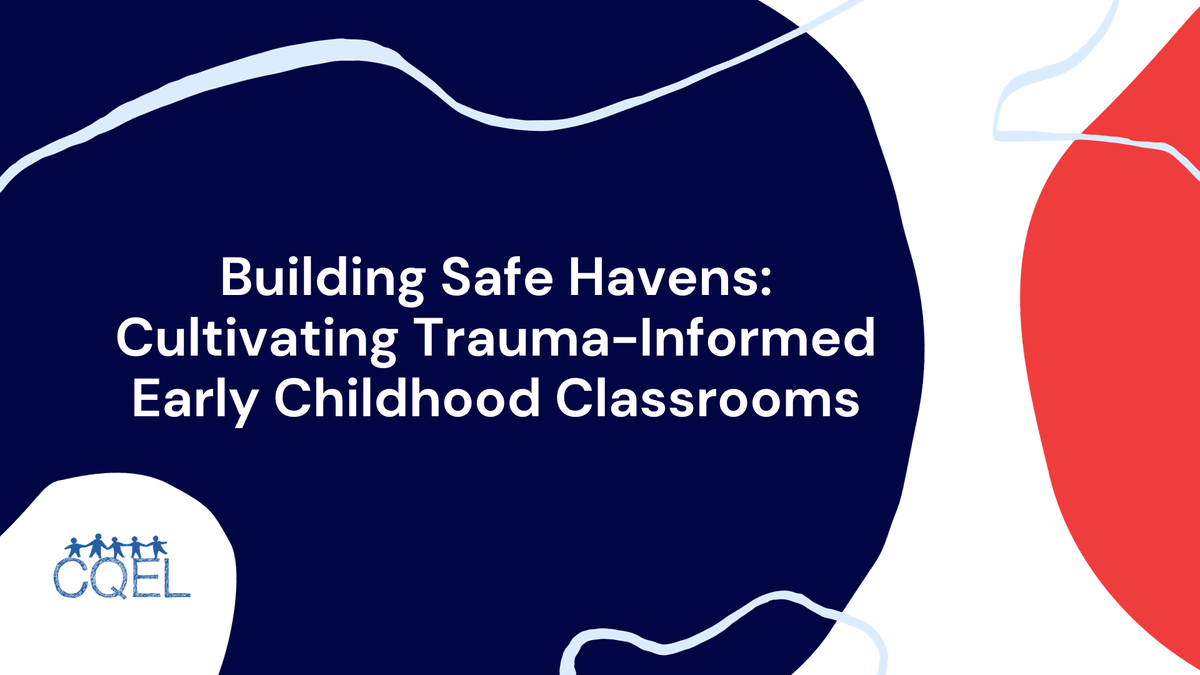Building Safe Havens: Cultivating Trauma-Informed Early Childhood Classrooms
In the nurturing world of early childhood education, creating a trauma-informed classroom becomes an essential mission, a safe haven where healing can begin and every child can thrive.

Childhood should be a time of wonder, exploration, and carefree laughter. But for some children, early life experiences can be marked by trauma, casting long shadows that can impact their learning, social interactions, and emotional well-being. In the nurturing world of early childhood education, creating a trauma-informed classroom becomes an essential mission, a safe haven where healing can begin and every child can thrive.
Understanding the Landscape:
First, we must recognize the pervasive nature of childhood trauma. Exposure to violence, neglect, or even chronic instability can leave lasting scars. These experiences can manifest in various ways: difficulty focusing, emotional outbursts, clinginess, or withdrawal. By understanding these potential signs, we can approach each child with empathy and a trauma-informed lens.
Building Pillars of Safety:
- Predictability and Routine: Children crave structure and consistency. Establishing predictable routines, clear expectations, and consistent communication provides a sense of security and reduces anxiety.
- Relational Connections: Building strong, positive relationships with each child is paramount. Active listening, validating emotions, and offering unconditional support create a safe space where children feel seen, heard, and valued.
- Empowerment and Choice: Trauma can strip children of their sense of control. Offering choices throughout the day, from activity selection to self-care strategies, empowers them to regain a sense of agency over their lives.
- Sensory Sensitivity: Trauma can heighten sensory sensitivities. Providing calming spaces, fidget objects, and sensory-rich activities can help children manage overwhelming sensations and regulate their emotions.
Navigating Challenges:
- Triggering Situations: Be mindful of potential triggers, such as loud noises, sudden changes, or certain topics of discussion. Create a safe space where children can communicate discomfort and adjust activities as needed.
- Emotional Outbursts: Understand that emotional outbursts are often a way for children to communicate distress. Stay calm, offer support, and avoid punishment. Help children identify and express their emotions in healthy ways.
- Collaboration: Partner with families and other professionals to ensure a consistent and supportive environment for the child. Share information openly and work together to create a holistic support system.
Remember:
Creating a trauma-informed classroom is an ongoing journey, not a destination. It requires continuous learning, reflection, and adaptation. But with dedication and compassion, we can build classrooms that are not just safe spaces, but sanctuaries for healing, growth, and resilience. Every child deserves a chance to blossom, and our classrooms can be the fertile ground where they can do just that.
Additional Resources:
- The National Child Traumatic Stress Network (NCTSN): https://www.nctsn.org/
- The Trauma-Informed School Project: https://www.traumainformedschools.org/
By embracing these principles and resources, we can transform our early childhood classrooms into beacons of hope, where every child, regardless of their past, can flourish and reach their full potential. Let's create a world where every childhood is filled with sunshine, even on the rainiest days.
